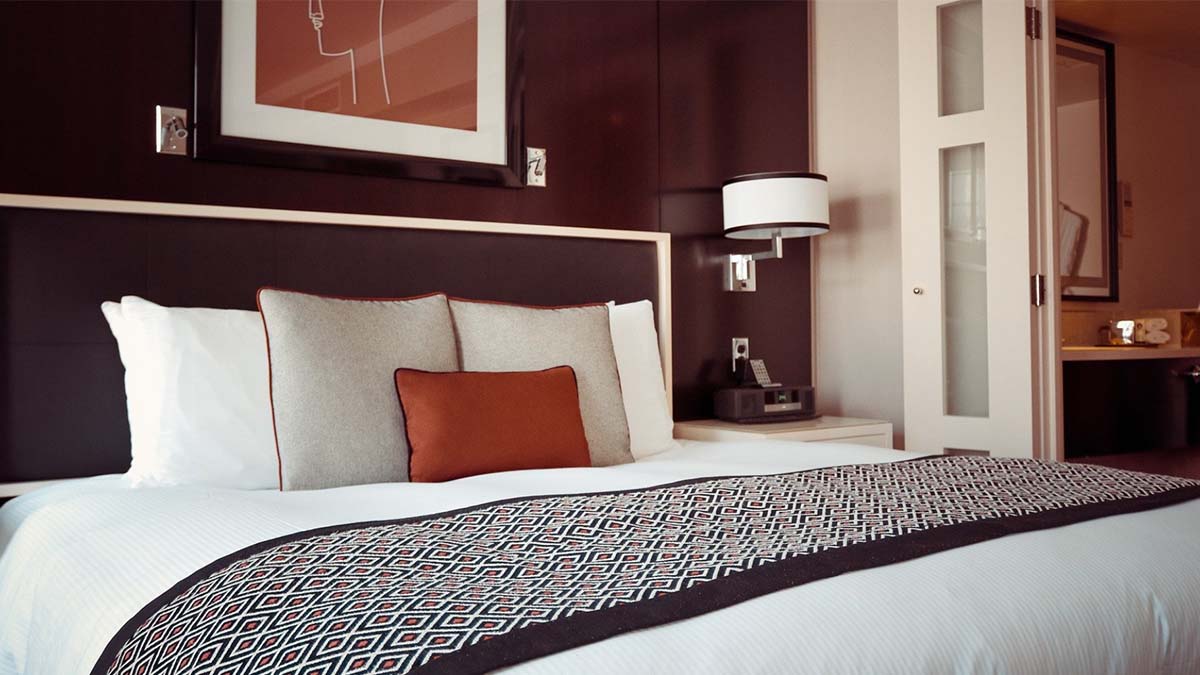
Hospitality real estate is property used to serve travelers—both long-term and short-term—for business and pleasure.
There are a wide variety of hospitality properties that serve all types of travelers. Some are economy hotels that target travelers passing through for a short amount of time and others are luxury resorts that strive to serve every desire for their guests.
The economy impacts all types of real estate, but it has more of a direct impact on the success of most hospitality properties. For example, middle to upper luxury hotels usually have strong occupancy when the economy is doing well. However, a recession may cause travelers to downgrade to middle-tier or economy hotels.
What are the Types of Hospitality Real Estate?
Because various types of hospitality properties are always developing as companies adjust to meet the needs of modern tourists, there isn’t a defined number of hospitality property categories. That being said, here are 19 types of hospitality properties you should know.
1. Chain hotels
Chain hotels are the most common hotel category with tens of thousands of locations worldwide. A chain hotel is a collection of hotels run by the same firm or owner.
Each chain hotel is branded, priced, and designed for a specific target audience. When you travel from one chain hotel to another of the same kind, you’ll experience a high level of consistency. Marriott Hotels, for example, has a portfolio that includes The Ritz-Carlton, Sheraton, Westin, Gaylord, Courtyard, and SpringHill Suites. Each Sheraton hotel will feel similar, but Sheraton hotels will feel different than Westin hotels even though the same operator manages them.
2. Conference/Convention Center Hotels
The mix of guest rooms and meeting space distinguishes conference or convention center hotels. These properties support large gatherings and offer various event alternatives to meet different layouts, entertainment, A/V equipment, and breakout room requirements.
Conference hotels and convention center hotels specialize in providing everything required for a conference, including the event site, overnight accommodations, food and beverage services, and transportation. They are commonly found in major cities or prominent business locations and generally house thousands of square feet of flexible event space.
3. Extended Stay Hotels
While many housing choices cater to overnight or short-term visits, certain establishments serve travelers who want to remain for a prolonged time. Hotels that do this are known as extended stay hotels, and they’re popular among business travelers and those staying in the same region for several days, weeks, or months.
Most extended-stay establishments give visitors additional amenities such as a fully-equipped kitchen to make them feel more at home. However, just because it’s an extended stay doesn’t mean you can’t rent it at a daily rate.
4. Boutique Hotels
Boutique hotels are smaller than commercial hotels and typically have 100 or fewer guest rooms. Often found in exciting settings or near popular sites such as an urban city center or chic retail real estate areas, boutique hotels usually come at a slightly higher price point, have a distinct aesthetic, and offer attentive services.
5. Eco Hotels
An eco hotel, also known as a green hotel or a sustainable hotel, focuses on functioning in an ecologically-friendly and sustainable manner. Eco-friendly hotels implement green efforts such as solar power and trash reduction to minimize their carbon footprint and environmental impact.
6. Casino Hotels
Casino hotels, as the name implies, are located within—or combined with—casinos. Travelers visiting a casino hotel will often find a variety of restaurants, bars, entertainment, and shopping options, as well as overnight guest rooms and access to the on-site casino.
7. Pop-up Hotels
Pop-up hotels are attractive and trendy temporary lodging options that only exist for a short period of time. Guests searching for unique experiences or who want to explore “undiscovered” locations are often interested in pop-up hotels. Many trendsetters and social media influencers are drawn to these hotels because of the experience and exclusivity that come along with them.
8. Gastro Hotels
Gastro hotels are perfect for foodies since they specialize on offering guests with both overnight lodging and delectable meals. With fewer than 50 rooms, the bulk of gastro hotels are small. For example, the Cookbook Gastro Boutique Hotel & Spa has only 17 rooms and concentrates on presenting gourmet delights to guests who want to stay there.
9. Micro Hotels
Micro hotels are tiny hotels that cater to folks who merely want a place to sleep and not much more. These types of hotels are growing in size, and the Hilton Motto brand, which includes city-centric sites that provide “travel-sized accommodations for all-sized adventures,” was recently established.
10. Transit Hotels
Transit hotels, sometimes known as airport hotels, are ideal for travelers who need to sleep near the airport to catch an early flight, wait on standby until a new flight becomes available, or sleep during a long layover. Transit hotels are frequently located near a terminal and a security checkpoint within an airport to make it as convenient as possible for travelers to commute from the hotel to their flight.
11. Heritage Hotels
A heritage hotel is a wonderful choice for individuals who wish to learn about a location’s history or immerse themselves in local culture. These hotels are generally located in historically significant locations or have a direct connection to key events that influenced the local culture. Due to the age of many of the original structures, several historic hotels are rebuilt replicas of historical castles or temples.
12. All-Suites
All-suite hotels are hotels in which all of the guest rooms are suites. These hotels generally include the word “suites” in their name, making it more straightforward for tourists to recognize them. Guests staying in an all-suite property typically receive a room with a bedroom, separate sitting area, and kitchen or cooking equipment. Many prominent hotel chains, such as Choice Hotels’ Comfort Suites, Hilton’s Embassy Suites, and IHG’s Staybridge Suites, have an all-suites brand under their umbrella.
13. Resorts
A resort property typically provides guests with everything they need in one place, including lodging, dining, drinking, shopping, and entertainment. Some resorts are all-inclusive, allowing guests to pay one price for limitless service, whereas others are pay as you go. Most resorts are located in popular tourist destinations and have a concierge to set guests up with various activities and experiences nearby.
14. Bed and Breakfasts
Bed & breakfasts, which are often smaller, privately owned places, are a popular choice among tourists wishing to immerse themselves in the nuances of a region. Many “BnBs” are run by live-in innkeepers and offer a bed and culinary services (most typically breakfast). The proprietors frequently live on the property, run the business, and make meals for visitors.
15. Motels
Motels feature a different layout than traditional hotels, with rooms directly accessible from the outside instead of through a lobby. Furthermore, motels are usually only one to two floors tall, whereas hotels can be substantially taller.
The phrase “motel” is a combination of the words “motor” and “hotel” and was coined in the 1920s as an economical and convenient place to stay overnight on long journeys. Motels are usually found near highways and other main thoroughfares, with few if any facilities. Some of the most well-known motel chains include Motel 6, Super 8, and Econo Lodge.
16. Inns
A typical inn is substantially smaller than a regular or chain hotel. Inns (frequently independently or family-owned) provide visitors with a comfortable, friendly atmosphere. Many inns have different designs or décor, giving visitors a one-of-a-kind experience. Inns often have fewer in-room facilities than a major hotel chain, but you may receive basic amenities such as in-room coffee, Wi-Fi, or limited breakfast selections.
17. Bunkhouses
Bunkhouses are basic lodgings with bunk beds or a barracks-like construction type. Bunkhouses were originally used to shelter fieldhands, ranchers, working cowboys, and other migratory laborers. However, bunkhouses have developed through time, and many hotels now have sophisticated versions that can accommodate big parties. Because of this, bunkhouses are becoming more popular in locations where it’s common for a group of friends to travel together such as a popular ski resort.
18. Roadhouses
The term “roadhouse” was historically used to refer to motels or other low-cost lodging options near roads. It was also a word used in the United Kingdom to indicate wayside pubs with accommodation possibilities. While the term is still used in certain ads for hotels and venues, it is now more commonly associated with restaurants.
19. Hostels
Hostels are a type of lodging that caters to tourists on a tight budget or who want a social component to their journey. Most hostels provide dorm-style sleeping rooms, communal bathrooms, and a shared kitchen area. Due to their price point and social factors, hostels are popular amongst students and younger tourists.
What Are the Different Classes of Hospitality Real Estate?
Depending on its age and quality, hospitality real estate is classified into three separate classes of office buildings: Class A, B, and C.
What is Class A Hospitality Space?
Class A hospitality real estate includes the newest, highest-quality hospitality buildings on the market, as well as the best facilities in prime locations. In high-traffic regions, Class A hospitality buildings are frequently leased by higher-income tenants and have low vacancy rates.
What is Class B Hospitality Space?
Class B Hospitality buildings are slightly older and are located in slightly less attractive—but still good—neighborhoods than Class A Hospitality facilities. Class B properties are usually still good houses and investments; they just require a bit more maintenance and aren’t in the finest location.
Investors may consider Class B hospitality facilities as “value-add opportunities” since they may be refurbished to become more comparable to Class A enterprises.
What is Class C Hospitality Space?
Class C Hospitality buildings are often older, have deferred maintenance, and aren’t in a great location. Investors generally view Class C Hospitality facilities as having more considerable “value-add potential” than Class B Hospitality space if the property is still in a strong or expanding location.
Hospitality Real Estate 101
Hospitality real estate is one of the main types of real estate that is primarily used to serve travelers—both long-term and short-term—for business and pleasure.
When it comes to commercial real estate in general, there is a lot to learn, and the same is true for hospitality real estate. The more you become familiar with the concepts and how to analyze prospects, the easier it will become to recall. Here’s a quick rundown of hospitality real estate:
- There are a wide variety of hospitality properties that serve all types of travelers including:
- Chain Hotels
- Conference/Convention Center Hotels
- Extended Stay Hotels
- Boutique Hotels
- Eco Hotels
- Casino Hotels
- Pop-Up Hotels
- Gastro Hotels
- Micro Hotels
- Transit Hotels
- Heritage Hotels
- All-Suites
- Resorts
- Bed and Breakfasts
- Motels
- Inns
- Bunkhouses
- Roadhouses
- Hostels
- Hospitality real estate is categorized by three asset classes including:
- Class A Hospitality
- Class B Hospitality
- Class C Hospitality



